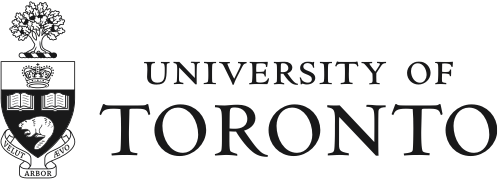Instructional Resources
Following best practices for accessible course materials, as well as incorporating UDL principles, will lead towards a more flexible, inclusive and accessible environment for your course and promote increased engagement by all students.
Guidance towards the creation of more universally accessible materials is available via the following resources. There are many resources offered on this page! Take a deep breath and know that creating accessible content is a journey that is taken one step at a time. Focus on one thing - master that, then focus on another.
- Captioning, Transcription, and Audio Description
- Working In Canvas
- What is Ally?
- Guidance from the ITS Learning Technology Services team
- Mastering the Core Skills
- Digital Tools Available to the University Community
- Key UVA Websites for More Information
Captioning, Transcription, and Audio Description
UVA Captioning Guidelines
These guidelines apply to the captioning/transcription of live and recorded (post-production) events/classes presented online. Guidance for captioning in-person live events is similar and the information provided below should be considered. These guidelines have been approved by the Office of the University Counsel, the ADA Coordinator, the Coordinator of Academic Accessibility, and the Director of the Student Disability Access Center.
The Captioning Project
A centrally funded project to provide captions and transcripts, professionally done with greater than 99% accuracy, are available without charge for recorded audio and video materials used in an academic course. For more information email [email protected].
To request captioning, use the Captioning & Transcription Assistance Form.
The VHEAP Captioning Initiative
When non-academic content requires captioning, transcription, audio description, or live captioning is required, the vendors participating in the Virginia Higher Education Accessibility Partners (VHEAP) Captioning Initiative are ready to work with you. These types of services are not centrally funded and are used at the department's expense. For more information send email to [email protected].
Working In UVA Canvas
The ITS Learning Technology Services team has created guidance documents to help you start work in, or transition to, UVA Canvas. Highlighted below are documents that specifically address accessibility of course content, however, this type of guidance can be found throughout their documentation.
For assistance with UVA Canvas, first take a look at the very good documentation found at the Learning Technology Services Help webpage. You can also contact the team at [email protected].
What is Ally?
Anthology Ally is a tool integrated into Canvas that provides:
- An integrated and seamless approach to creating more accessible content
- Automatically generates alternative formats for all
- Feedback and guidance to increase awareness
- Comprehensive reporting to prioritize efficiently and effectively
For more information, view recent training videos found on the Coordinator of Academic Accessibility YouTube site.
Guidance From the ITS Learning Technology Services Team
MyMedia
- How do I customize captions in My Media or Media Gallery?
- How can I use a transcript in Media Gallery?
- How do I request to add captions to a file in My Media?
- How do I enable captions requests for all files in Media Gallery?
- How do I edit captions in My Media?
Zoom
Photo Roster
Posted Feedback
SensusAccess
Mastering the Core Skills
Whether you are creating a Word document or developing a web page, there are certain core skills which are key to creating an inclusive and accessible experience. Use the "plus one" mindset - learn one skill, then add another, and then another. These skills will help move the needle towards greater accessibility of course content. Remember, mastering these skills doesn't have to be done all at once! Master one, then another, and so on.
See the section on Developing Core Skills for more information:
- Use unique and descriptive links
- Use lists correctly
- Use color with care
- Use table for tabular data, not layout
- Use proper heading structure and logical flow of interactive elements
- Properly format forms
- Keyboard only access should be logical and provide clear focus
- Include alternative text for images, charts, and graphs
- Assure accessibility of video and audio content
Digital Tools Available to the University Community
Otter Voice Notes
Otter Voice Notes (Otter) is a tool that converts voice conversations into smart notes by recording the audio and using artificial intelligence to provide machine-generated transcription. These transcriptions/notes can be edited, shared, and easily searched.
Read&Write Software
Offers reading, writing, studying, and research support tools that integrate with your computing device for universal learning options.
EquatIO
EquatIO is a digital math editing application that allows you to create, edit, insert, and listen to math and science in Microsoft Word and Chrome.
SensusAccess
SensusAccess is a self-service, on-demand file conversion tool. It can turn written documents into audio MP3 files to play on any device or DAISY audiobooks for the visually impaired. It can also render image-only PDFs, PowerPoint presentations, and JMP statistical graphics into less challenging formats. BeeLine Reader is now included in our instance of SensusAccess.
Specific Information for Using Zoom and Other Online Video Conferencing Tools
- Zoom: Accessibility Considerations & Best Practices
- Accessible Video and Audio Materials
- Integrating Captions with Other Tools
- Working with Online Video Conferencing Tools
Key UVA Websites for More Information
- UVA Accessibility: A central location for links to disability and accessibility information at UVA
- Digital Accessibility: Focus on the accessibility of digital assets and content in our digital environment
- Library Accessibility Services: Focus on media accessibility including captioning of video and audio materials, and print format conversion
- Student Disability Access Center: Information for students seeking accommodations and for faculty who receive an accommodation request
- ADA Coordinator: Information from our ADA Coordinator including workplace accommodation procedures
- Coordinator of Academic Accessibility: Focus of this office is on the overall accessibility of the academic environment
